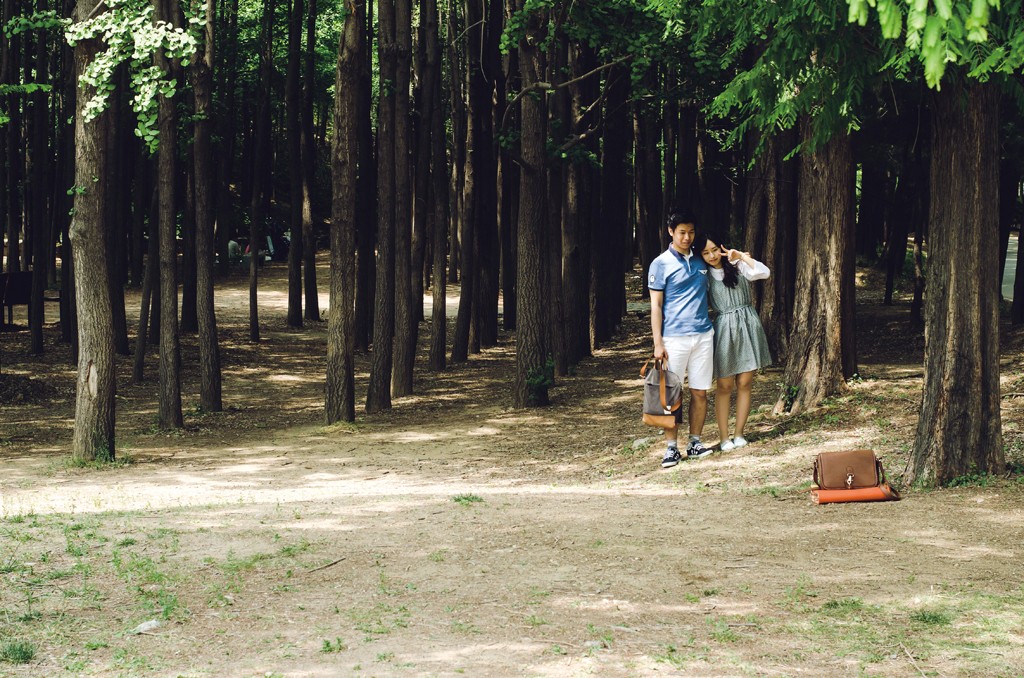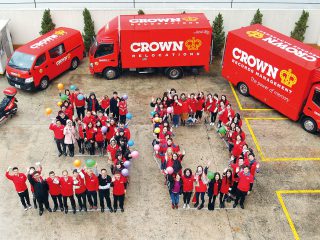Wood and water in one of Seoul’s most up-and-coming neighborhoods
Bundang Line — Station #K211
Park life
In past centuries, the forested northeastern banks of the junction where the Jungnang Stream empties into the Hangang River served as royal falconry grounds, a horse pasture, a source of timber, a site for military parades and a racetrack. Today they form Seoul Forest (서울숲), sprawling over a million square meters. One of Seoul’s best green spaces, it’s divided into five distinct zones, encompassing nearly everything you could want in a park: expansive grassy lawns, performance spaces, athletic facilities, playgrounds and a sculpture garden. Among the forest’s highlights are the Butterfly Garden, where you can wander through an enclosure filled with hundreds of flitting butterflies, and a man-made lake filled with carp that congregate under a footbridge to wait for dropped bits of food.
Seoul Forest’s best-known feature, though, is its resident spotted deer that reside in the Eco Forest. Ordinarily, visitors are allowed to get up close and hand-feed the caramel-colored animals, but this privilege is presently suspended due to fears of foot-and-mouth disease.
Waterworks
The neighborhood surrounding the park has long been a center of industry in Seoul. Though many factories have closed down or moved out as the area has gentrified, a walk through the backstreets, particularly those east of the station, will reveal a fascinating side of the city, populated with die casting shops and small-scale machinists. This mix of industry and development has in recent years proven a strong lure to the city’s creative class, giving the Seongsu area a burgeoning reputation as one of Seoul’s most happening districts. For a taste of what’s going on here, head down Seoul Forest-2-gil (서울숲2길), just north of the park, where you’ll find a fair trade shop, a leather bag workshop and showroom, a bakery specializing in homemade pies and a shared workspace for start-ups, among others.
Seongsu, in fact, has a long history of innovation, and visitors can learn about one of its most famous developments back in Seoul Forest’s southeastern corner. It was here, in 1908, that two Americans, C.H. Collbran and H.R. Bostwick, oversaw the construction of what was to become the Korean Waterworks Co., the country’s first water treatment plant. Today it is the site of the Waterworks Museum (수도박물관), dedicated to the former plant and to the history of water use in the capital.
[separator type=”thin”]More info
Seoul Forest 서울숲
Exit 3 or 4
Hours
Open 24 hours, except for Eco Forest
(Jun-Aug: 7:00-21:00, Sep-May: 7:00-20:00)
Waterworks Museum 수도박물관
Exit 3
Straight on Wangsimni-ro 왕십리로
Hours
Mar-Oct: 10:00-20:00 on weekdays, 10:00-19:00 on weekends;
Nov-Feb : 10:00-19:00 on weekdays, 10:00-18:00 weekends;
Closed Mondays, New Year’s, Seollal, Chuseok
Admission | Free
02) 3146-5936, 02) 3146-5921
arisumuseum.seoul.go.kr
Written by Charles Usher
Photographed by Chris da Canha



